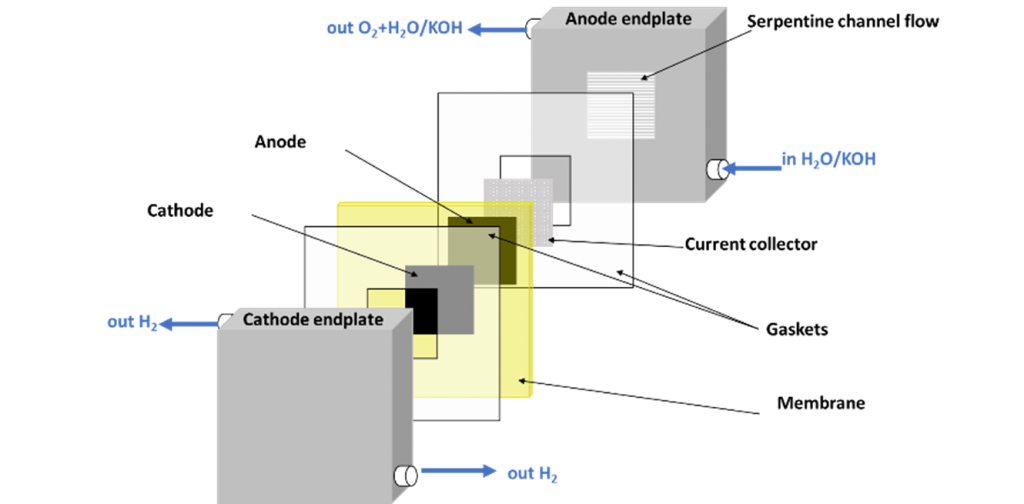The ANIONE project aims to further develop and mature the anion exchange membrane (AEM) water electrolysis technology, so it becomes an efficient, cost effective and durable technology.
The WP5 activities of ANIONE comprise the design of advanced MEAs for AEM electrolysis applications with the overall aim of improving performance and durability while simultaneously reducing cost. The specific objectives are as follows:
- Develop and manufacture innovative MEAs for AEM electrolysis based on thin, perfluorinated anionic Aquivion® or hydrocarbon-type, membranes and ionomers, and non-CRM catalysts based on Ni, Fe, Mn alloys and oxides
- Achieve a current density for the MEAs ≥1 A⋅cm-2 at 1.8 V under optimised operating conditions in lab scale and in full-scale cells
- Demonstrate high durability in single cell tests with degradation rate <5 μV/h under steady state galvanostatic conditions (1 A/cm2) and <10 μV/h under cycled operation (0.2-1.0 A/cm2).
- Assessment of Faradaic efficiency (>99%) under high differential pressure.
The performed work comprises of an initial screening analysis that was carried out at the CNR-ITAE of different MEAs based on various precursors and combinations. The MEAs were judged based on polarisation and EIS; long-term test was performed on selected MEAs with encouraging performance.
The work has been concentrated on NiFe-oxide anodes with 33 wt% AEM ionomer and a catalyst loading of 2.5 mg/cm2. The commercially available Fumatech membrane FAA3-50 has been chosen for this study. The project performance and durability targets has been obtained for MEAs with a cathode loading of 1.2 mgPt/cm2. However, encouraging results have also been obtained with several of the non-PGM cathode catalysts developed within the ANIONE project. The ANIONE project performance target has been obtained with an AnIone supported Ni based cathode at 50ºC after 2,000 accumulated test hours. Pure hydrogen was produced at the cathode with a faradaic efficiency better than 99%. The Information derived from the screening analysis has been transferred to IRD in order to scale-up the selected formulations for large scale MEA manufacture.
